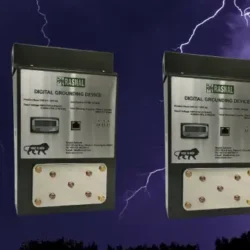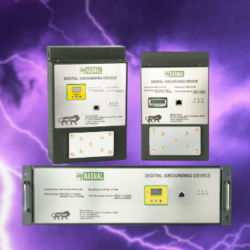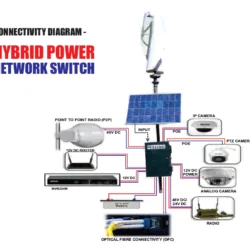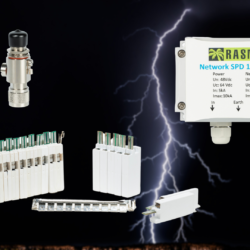In industries where even a millisecond of power failure can cause data loss or system downtime, digital grounding devices have become essential. They ensure that sensitive electronic equipment stays protected from surges, faults, and grounding failures, delivering stability, safety, and long-term reliability.
But what makes a digital grounding system different from traditional earthing? Let’s break it down simply.
What Is a Digital Grounding Device?
A digital grounding device (also called a digital earthing device) is an advanced earthing solution designed to monitor, manage, and stabilize the grounding network in real time.
Unlike traditional earthing systems that rely solely on conductive rods and soil resistance, digital grounding integrates intelligent monitoring and fault indication.
It helps industries detect faults before they escalate, reducing downtime, equipment damage, and fire risks.
Example: Rasnal’s Digital Grounding Device VKP-1 AC continuously monitors grounding conditions and ensures that the entire system maintains a stable potential difference, even during electrical surges.
Why Traditional Earthing Isn’t Enough Anymore
Traditional grounding systems work well in simple electrical setups, but today’s industrial infrastructure is far more complex. Modern systems have multiple interconnected circuits, data lines, and automation controls, all of which are highly sensitive.

Challenges with conventional earthing include:
- No real-time monitoring or fault indication
- Corrosion and soil resistance variation
- Unpredictable performance during lightning or surges
- Higher maintenance costs
That’s where digital earthing steps in, combining intelligence, automation, and precision for 24/7 protection.
How a Digital Grounding Device Works
At its core, a digital grounding device acts as a dynamic safety gate between your power system and the ground.
Here’s a simplified overview of how it functions:
Continuous Monitoring: It keeps track of voltage, current, and potential difference between the system and the earth.
Fault Detection: It instantly detects high resistance, poor grounding, or leakage faults.
Automatic Alerting: In case of abnormal conditions, the device indicates a warning or triggers a safety cutoff.
Stable Earthing: It ensures your equipment always has a consistent grounding reference, improving uptime and equipment lifespan.
For a deeper understanding, explore Rasnal’s blog on How Digital Grounding Devices Strengthen Safety in Power Circuits.
Industry Applications: Where Digital Grounding Makes a Difference
Digital grounding devices are used across multiple sectors that depend on continuous, clean, and stable power.
- Telecom Networks:
Protects switching systems, routers, and communication towers from lightning and grounding faults.
- Data Centers:
Ensures stable grounding for high-density servers and network gear, minimizing data loss and power fluctuation issues.
- Industrial Automation:
Supports machinery with digital control circuits, ensuring smooth operation during electrical disturbances.
- Renewable Energy Systems:
In solar and wind setups, digital grounding improves inverter performance and prevents ground-loop interference.
- Security & Surveillance:
Protects CCTV networks and access systems from transient surges caused by lightning or static build-up.
Benefits of Using a Digital Grounding Device
- Modern digital earthing systems offer multiple technical and operational advantages:
- Real-time fault indication for quick response
- Stable earthing potential during surges and lightning
- Reduced maintenance compared to traditional grounding
- Improved system reliability and equipment lifespan
- Compliance with modern safety standards
With devices like Rasnal’s VKP-03 AC and VKP-1 AC, industries can achieve smart grounding, combining high-performance hardware with intelligent safety monitoring.
Choosing the Right Digital Grounding Device
When selecting a grounding solution, consider:
- System load and current rating
- Installation environment (indoor/outdoor)
- Monitoring requirements (manual or automatic)
- Integration with surge protection systems
If your operations depend on sensitive digital equipment, a digital grounding device is no longer optional, it’s essential.
Rasnal’s VKP Series models are designed to handle a wide range of industrial and telecom applications, ensuring consistent grounding and continuous monitoring.
The Future of Grounding: Intelligent, Digital, and Connected
As industries adopt IoT-based power management and smart automation, grounding systems will evolve further, integrating with cloud-based analytics and remote monitoring.
The future is clear: Digital grounding will form the foundation of next-gen electrical safety, blending hardware precision with intelligent insights.
Make Your Network Smarter, Safer, and Grounded
In today’s connected world, downtime is more than an inconvenience, it’s a loss of trust, data, and revenue.
A digital grounding device doesn’t just protect your equipment; it protects your continuity.
Choose Rasnal for reliable, intelligent grounding solutions that safeguard what matters most, your power, your systems, and your uptime.






